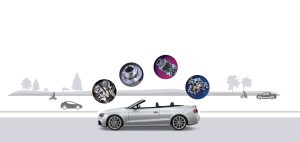Hybrid events are here to stay, and that doesn’t have to mean more stress for organizers. Done right, they offer the best of both worlds. The energy of in-person connection with the accessibility of digital participation. Platforms like Brown Paper Tickets, a ticketing service offering digital tools for seamless and sustainable event planning, are helping planners manage this complexity with confidence, keeping both virtual and on-site audiences engaged from start to finish.
Today’s attendees want more than one seat. They want to connect, participate and revisit meaningful content long after the event ends. Hybrid formats make that possible, but only if the experience is thoughtfully designed for both audiences. Bridging the physical and digital demands more than just a livestream, but it takes clear coordination, smart tools and programming that speaks to everyone.
Strategy Starts with Sync
Coordinating across formats starts with a shared plan. From the beginning, organizers need to map out what content is happening in person, what can be streamed live, and what digital-only components are needed to round out the experience. When both tracks are developed together, not as an afterthought, audiences stay aligned, and programming feels intentional.
Planning must also account for time zones, bandwidth, and screen fatigue. Virtual attendees benefit from shorter segments, access to recordings and digital-only extras that make up for what can’t be experienced on site. Meanwhile, in-person guests expect immersive environments, tactile moments and time to socialize. Building space for both requires clarity and structure, not duplication.
Tools That Tie It All Together
The right tech stack makes hybrid events manageable. Event apps that support dual agendas, attendee chat and Q&A can unify both groups. Features like session bookmarking, push notifications and closed captioning help virtual participants stay engaged without feeling like observers. At the core is a reliable ticketing platform that integrates both audiences into a single system. It supports hybrid-friendly infrastructure with mobile ticketing, digital updates and customizable tools that help organizers plan smarter and waste less. For small teams balancing multiple touchpoints, this kind of accessible tech reduces friction across every phase.
Platforms that offer real-time dashboards and check-in syncing allow staff to track who’s attending in person, who’s logged in virtually, and where engagement is dropping off. These data points help organizers correct courses quickly and adjust staffing or support without missing a beat. Over time, this insight also helps shape smarter strategies for future events, from programming to promotion.
Making Programming Matter for Both Sides
No one wants to feel like an afterthought, especially digital guests. Sessions must be designed with participation in mind. That could mean including live polls, chat moderators or interactive segments that welcome feedback. Some events invite virtual attendees to submit questions in advance or join speakers backstage for short follow-up discussions.
For the in-person crowd, exclusivity can still play a role. Venue-only perks, like pop-ups, workshops or networking lounges, give on-site guests meaningful reasons to show up. But the value of digital participation shouldn’t be treated as lesser. Offering early digital access, on-demand content, or digital gift bags can reinforce that both tracks matter. Hybrid programming can also support accessibility goals. Recordings with transcripts allow attendees with different learning needs or time constraints to engage on their terms. Offering audio versions or simplified summaries broadens the reach and builds long-term engagement.
Logistics Without the Lag
Hybrid events require thoughtful execution. Physical check-in must move quickly, while virtual entry needs to be equally smooth. Delays or confusing instructions risk early drop-offs. Clear signage, intuitive digital access and visible help resources make a difference.
In-venue AV teams should coordinate with digital producers to ensure camera angles, lighting and audio work for both audiences. A beautifully designed set means little if the stream cuts out or audio distorts. Redundancies, tests and backups are key. Digital hosts or emcees can help translate the energy of the room into an online experience. They bridge the gap, cue content and guide conversation, turning viewers into participants. For physical attendees, volunteers trained to support tech use, app downloads, or QR access points smooth the user journey in real time.
Building Connection Beyond the Screen
Hybrid events don’t end when the stream does. Follow-up matters. Sharing post-event materials, slides, session recordings or bonus interviews extends the experience. Digital recaps, curated photo galleries and highlights for both audiences maintain relevance and value. Email follow-ups that personalize takeaways or link to shared moments (like poll results or audience shoutouts) remind guests they were part of something collaborative. These details reinforce satisfaction, loyalty and return attendance.
Platforms like Brown Paper Tickets support this continuity through flexible communication tools that allow updates, thank-you messages and reminders without adding more platforms or manual steps. The goal is to maintain momentum without creating more lift for organizers already managing two tracks.
Getting Sponsorships on Board
Hybrid events open new doors for sponsors. They offer more touchpoints, broader reach and clearer metrics. Instead of just a logo on a banner, sponsors can engage through branded polls, breakout rooms or digital content hubs. Virtual gift bags, sponsored panels or downloadable help connect brands with both audiences in meaningful ways. When sponsors understand how both sides are being served and how their support shows up in each format, they’re more likely to invest in the long term. Transparent planning, shared data and storytelling all help make this visible.
Two Audiences, One Experience
Hybrid doesn’t have to mean double the work. It means thinking ahead, communicating clearly and choosing tools that support everyone. It means giving each guest a reason to stay, no matter how they show up. As hybrid planning becomes standard, the real opportunity is to create events that are not just accessible, but intentional, cohesive and built with care.
Events that blend in-person connection with digital reach are no longer optional, but they’re the new baseline. With partners supporting accessible planning and sustainable infrastructure, organizers are equipped to meet the moment without losing sight of what matters, such as people, participation and purpose.






